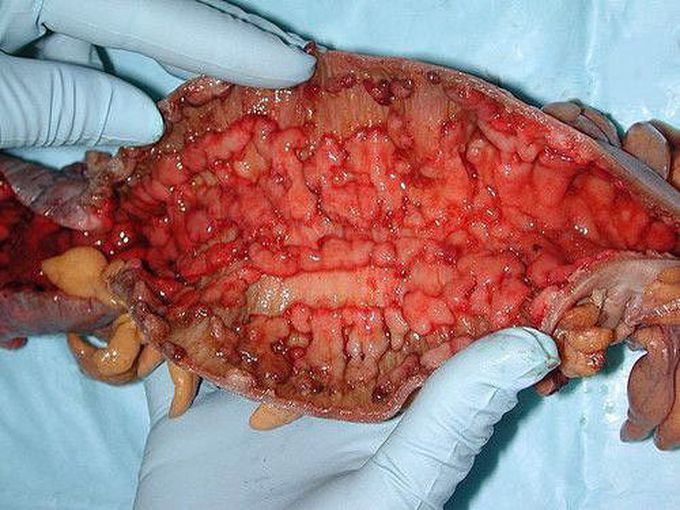


This portion of the colon demonstrates the gross findings with Crohn׳s disease, showing the cobblestone pattern due to submucosal thickening. Crohn’s disease comes under the general term of inflammatory bowel diseases and entails an idiopathic, chronic inflammatory process that can affect any part of the GI tract from the mouth to the anus, the terminal ileum of the small intestine in particular. The portion of bowel seen here has a thickened wall and the mucosa has lost the regular folds. The mucosal surface demonstrates an irregular nodular appearance with hyperemia and focal ulceration. The areas of inflammation tends to be discontinuous throughout the bowel in the case of Crohn’s, unlike ulcerative colitis with inflammation extending continuously (no skip areas) with the rectum almost always involved. Crohn’s disease features a transmural inflammation that spans the entire depth of the intestinal wall, granulomas, fissures, and fistulas. Patients usually present with fever, abdominal pain, diarrhea, and growth retardation. The condition can lead to complications such as intestinal obstruction, and rarely toxic megacolon or perforation. Crohn’s can be managed medically, with steroids for acute exacerbation and anti-TNF agents like infliximab and adalimumab. If medical therapy for an active disease fails, surgical resection of the inflamed bowel, with restoration of continuity, is indicated. Photo by @paboards
Hemodynamic stimuli&nonhemodynamic stimuliEffects of sugar on teeth

